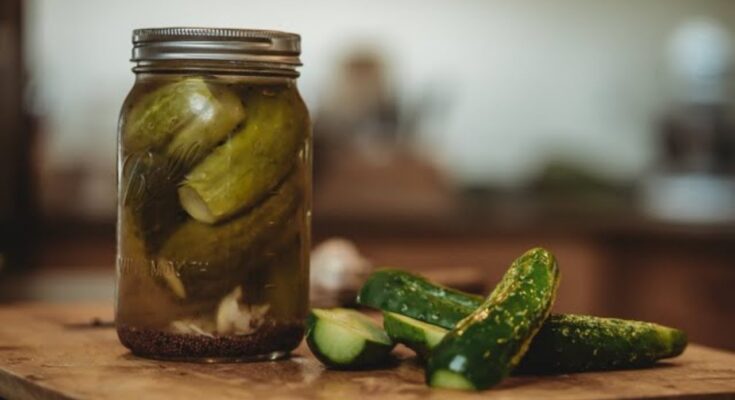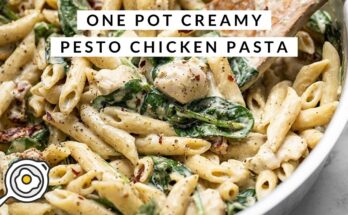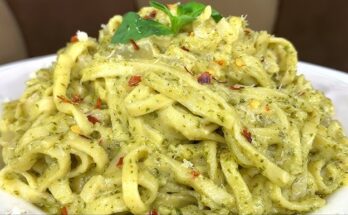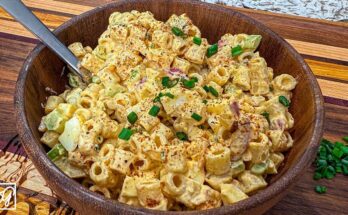Quick Pickle Recipe: Quick pickling is a fast and simple method to preserve vegetables using a vinegar-based brine. Unlike traditional canning that takes weeks, quick pickles are ready in just hours or days. This technique doesn’t require any special equipment or long fermentation—just a few fresh ingredients and a bit of patience.
What makes quick pickling so awesome is its accessibility. You don’t need to be a homesteader or a kitchen wizard. Anyone can whip up a jar of tangy, crunchy pickles at home. Whether you’re dealing with cucumbers, carrots, radishes, or even onions, quick pickling brings out the best in them with a punch of zesty flavor.
The process involves immersing your veggies in a brine made from vinegar, water, sugar, and salt. As they soak, they absorb the flavors and soften slightly, giving you a crisp, flavorful snack or condiment perfect for any meal. These aren’t the deep-fermented pickles you’d store for months; instead, they’re meant to be enjoyed fresh and quickly.
Benefits of Quick Pickling
Quick pickling has tons of perks—both culinary and practical. First off, it extends the shelf life of your produce. Got a bunch of carrots that are starting to wilt? Pickle them and give them new life. It’s a fantastic way to reduce food waste and add variety to your meals.
Another major benefit? Flavor customization. You control everything—from the level of sweetness to the spice factor. Want it garlicky? Throw in some smashed cloves. Craving something with a kick? Add chili flakes or sliced jalapeños.
And let’s talk nutrition. While quick pickles aren’t probiotic-rich like fermented ones, they still retain many nutrients from the fresh vegetables. Plus, the acidity from vinegar can aid in digestion.
Convenience is the icing on the cake. You don’t need a pressure canner or any fancy tools. With just a pot and a jar, you’re good to go. You can even get kids involved, making it a fun kitchen activity for the whole family.
Essential Ingredients for Quick Pickles
Core Ingredients You’ll Need
Every good quick pickle recipe starts with the basics. These are the ingredients you simply can’t skip:
- Vegetables: Fresh, firm produce is key. Popular choices include cucumbers, carrots, radishes, cauliflower, green beans, and onions.
- Vinegar: This is your main preservative and flavor booster. White vinegar, apple cider vinegar, and rice vinegar are all excellent choices.
- Water: Used to dilute the vinegar, keeping the brine from being overpowering.
- Salt: Non-iodized salt like kosher or pickling salt works best to avoid cloudiness in the brine.
- Sugar: Adds balance and tempers the acidity. You can adjust to taste.
Together, these five ingredients create the backbone of your pickling brine. The ratios can be tweaked, but a general rule of thumb is 1 cup vinegar to 1 cup water, with 1 tablespoon of salt and 1 tablespoon of sugar.
Optional Add-ins for Extra Flavor
This is where things get fun. Want to put your personal spin on things? Spice it up with any of the following:
- Garlic cloves
- Dill seeds or fresh dill
- Mustard seeds
- Peppercorns
- Bay leaves
- Chili flakes or fresh chilies
- Coriander seeds
- Turmeric (for color and warmth)
Herbs and spices can completely transform the taste. Experiment with combinations to find your signature flavor. A dill and garlic cucumber pickle? Classic. Carrots with ginger and chili? Totally next-level.
Tools and Equipment Needed
Basic Kitchen Tools
Quick pickling is refreshingly low-tech. Here’s what you’ll need:
- Cutting board and knife: For slicing your vegetables to the right thickness.
- Measuring cups and spoons: Precision matters in brine-making.
- Saucepan: Used to heat and dissolve your brine ingredients.
- Mixing bowl: Handy for tossing veggies before pickling.
All of these are common kitchen staples, making this recipe even more accessible to beginners.
Storage Containers and Jars
Choosing the right container makes a big difference in both flavor and shelf life. Mason jars are the gold standard because they seal well and don’t absorb odors. Glass containers are preferred over plastic since they don’t react with vinegar.
- Wide-mouth mason jars: Easier to pack and clean.
- Plastic lids or rust-proof lids: Vinegar can corrode metal, so consider switching to plastic tops if reusing jars.
- Labeling materials: Mark the date and contents for easy identification later.
Clean your jars with hot, soapy water and dry thoroughly before using. A sterilized container ensures your pickles stay fresh and crisp.
Step-by-Step Quick Pickle Recipe
Step 1: Preparing the Vegetables
Start with the freshest vegetables you can find. Wash them thoroughly under cold running water to remove dirt and debris. Peel if necessary (like with carrots), and slice uniformly for even pickling.
Thickness affects both texture and flavor absorption. For cucumbers, ¼-inch slices offer a nice crunch. Carrots can be julienned or cut into sticks. If you’re going for something like red onions, thin rings work best.
Pro tip: Soaking cucumbers in ice water for 30 minutes before pickling helps them stay extra crunchy.
Once chopped, place the vegetables into your clean jars, packing them in tightly but without crushing them. This ensures a better brine-to-vegetable ratio and enhances flavor distribution.
Step 2: Making the Brine
Now let’s bring that flavor to life! The brine is where the magic happens, infusing your veggies with tangy, sweet, and salty goodness. In a saucepan, combine:
- 1 cup vinegar (white, apple cider, or rice vinegar)
- 1 cup water
- 1 tablespoon salt (kosher or pickling)
- 1 tablespoon sugar
Heat this mixture over medium heat, stirring until the salt and sugar are completely dissolved. You don’t need to boil it—just warm enough to blend the ingredients well.
This is also the point where you can add your flavor boosters like:
- A couple of smashed garlic cloves
- A teaspoon of mustard seeds or dill seeds
- A few peppercorns or red pepper flakes for heat
Let the brine cool slightly for a few minutes if you’re pickling softer veggies like cucumbers or onions. Pouring boiling brine directly over them can affect their crunch. For heartier veggies like carrots or green beans, hot brine helps speed up the pickling process.
Carefully pour the warm brine over the packed vegetables in the jar. Make sure the liquid covers everything completely. Use a spoon or chopstick to gently press the veggies down and remove any air bubbles trapped in the jar.
Step 3: Combining and Storing
Once your brine is poured and your veggies are fully submerged, it’s time to seal the deal—literally.
Screw on the lid tightly. Let the jar cool to room temperature before refrigerating. Quick pickles don’t require a water bath or pressure canning. The vinegar does the preserving, and since these are refrigerator pickles, they’re meant for short-term storage.
Put the jar in the fridge and let it sit for at least 24 hours. This gives the brine time to infuse the vegetables fully. Some veggies might be ready in a few hours, but most hit their peak flavor after a day or two.
Your pickles will keep for about 2 to 4 weeks in the fridge, depending on the type of vegetable used. Always use a clean utensil when grabbing pickles from the jar to prevent contamination and extend shelf life.
Best Vegetables for Quick Pickling
Top Choices for Crunch and Flavor
When it comes to quick pickling, not all vegetables are created equal. Some veggies just naturally lend themselves better to the process—either because they absorb flavor well, keep a good crunch, or balance out the tangy brine with their own sweetness.
Here are some of the best choices:
- Cucumbers: The go-to veggie for pickles, especially Persian or Kirby cucumbers.
- Carrots: Naturally sweet and crunchy—perfect for spicy brines.
- Radishes: A little spicy, super crunchy, and they take on brine flavor quickly.
- Red Onions: Pickled onions are great for tacos, burgers, or salads.
- Cauliflower: A firm veggie that stays crunchy and absorbs flavor well.
- Green Beans: Make for a crispy snack or side dish with garlic and chili flakes.
- Beets: Add stunning color and earthy sweetness.
Each veggie brings something different to the table. Mixing them can also be a fun way to create variety in one jar. Think cucumber-carrot, onion-radish, or even cauliflower-beet blends.
Creative Veggie Combinations
Don’t be afraid to get a little wild. The beauty of quick pickling is that it’s super flexible. Want a colorful rainbow mix? Combine red onions, orange carrots, and green cucumbers in one jar. Like spicy snacks? Throw in some jalapeños with your green beans.
Here are a few fun combinations to try:
- Sweet & Spicy Carrots: Carrots, honey, chili flakes, ginger
- Classic Deli Mix: Cucumbers, dill, garlic, mustard seeds
- Taco Toppers: Red onions, lime juice, cilantro, cumin seeds
- Crunchy Medley: Cauliflower, carrots, green beans, turmeric, peppercorns
Play with spices, herbs, and citrus zest to create custom flavors you’ll love. Quick pickling is all about experimenting and finding what makes your taste buds dance.
Flavor Variations for Every Palate
Sweet Pickles vs. Spicy Pickles
Everyone has a preference when it comes to pickles. Some crave the sugary crunch of a bread-and-butter pickle, while others want a kick-in-the-mouth heat from jalapeños and chili flakes. The beauty of quick pickling is that you can easily adjust your recipe to suit either taste.
For sweet pickles, simply increase the sugar content in your brine. Here’s a good ratio for sweeter pickles:
- 1 cup vinegar
- 1 cup water
- 2–3 tablespoons sugar
- 1 tablespoon salt
Add aromatics like clove, cinnamon, or allspice berries for an old-school flavor. Sweet pickled onions, carrots, and cucumbers pair great with sandwiches and fried foods.
On the flip side, spicy pickles are where it’s at for heat-lovers. To add a fiery punch:
- Toss in sliced jalapeños or serranos
- Use red chili flakes or a few dried chili peppers
- Add black peppercorns and fresh garlic
A touch of turmeric gives your pickles that iconic yellow hue, and ginger adds a pleasant burn. Try this with cauliflower, carrots, or green beans for maximum crunch and spice.
International Flavor Profiles
Why stop at basic when you can go global? Quick pickles are popular in cuisines worldwide, and you can mimic these tastes with the right spice combos:
- Asian-style: Use rice vinegar, a touch of sesame oil, ginger, and garlic. Add soy sauce or fish sauce for umami depth. Great for daikon, cucumbers, or green beans.
- Mexican-style: Try white vinegar with lime juice, cumin seeds, coriander, and jalapeños. Perfect for red onions and carrots—awesome on tacos!
- Indian-style: Incorporate mustard seeds, curry leaves, fenugreek, and turmeric. This works well with carrots, cauliflower, or even mango.
- Middle Eastern-style: Use vinegar with sumac, garlic, coriander, and fresh dill or mint. These pickles pair beautifully with kebabs and falafel.
This creative approach transforms everyday veggies into global treats, giving your fridge an international flair with minimal effort.
Serving Suggestions and Meal Pairings
Toppings, Snacks, and Side Dishes
Pickles aren’t just for burgers. Once you have a jar (or three) of quick pickles in the fridge, you’ll find endless ways to use them. Here are a few easy ideas:
- On Sandwiches and Wraps: Pickled cucumbers, onions, or carrots add crunch and acidity that cut through rich meats and cheeses.
- As Taco Toppings: Quick-pickled red onions or jalapeños brighten up any taco night.
- In Salads: Add sliced pickled radishes or beets to grain bowls or leafy greens for extra zip.
- As Appetizers: Serve a pickle platter with cheese, olives, and charcuterie for a crowd-pleasing snack.
- On Burgers and Hot Dogs: Ditch the store-bought relish—your homemade pickles have way more flavor.
You can even eat them straight from the jar. They’re that good.
Cooking with Quick Pickles
Yes, you can cook with them too! Try dicing up your pickles and folding them into egg salad, tuna salad, or potato salad. Their acidity adds a pop that balances creamy textures.
Add brine to sauces and dressings for an instant flavor booster. A spoonful of pickle juice in coleslaw? Game changer. Even pickle juice in marinades works wonders for tenderizing meat and adding zing.
If you’re grilling, quick pickles make a refreshing contrast to smoky flavors. Grilled chicken with a side of pickled green beans or a spicy cucumber salad? Chef’s kiss.
How to Store and Preserve Quick Pickles
Refrigeration Tips
Quick pickles are meant for short-term storage and must be kept in the fridge. Always:
- Store in airtight, non-reactive containers (like glass)
- Keep them submerged in brine to prevent spoilage
- Use clean utensils when serving to avoid contamination
Label your jars with the date you made them. Most quick pickles are best consumed within 2 to 4 weeks. Some heartier veggies like carrots and cauliflower can last a bit longer, but cucumbers are best enjoyed sooner while they’re crisp.
Signs of Spoilage
Even though vinegar is a natural preservative, quick pickles can still go bad. Toss your pickles if you notice:
- Foul or off smells
- Mold on the surface or around the lid
- Slimy texture
- Cloudy brine (unless you’ve used spices like turmeric which naturally cloud the liquid)
When in doubt, throw them out. Safety first.
FAQs about Quick Pickle Recipe
1. How long do quick pickles last?
Quick pickles typically last up to 2 weeks when stored in an airtight container in the refrigerator. Always use clean utensils when serving to extend their shelf life.
2. Can I reuse the pickling brine?
Yes, you can reuse the brine once for another batch of vegetables. However, it’s best to boil it again before reuse to ensure safety and freshness.
3. Do quick pickles need to be refrigerated?
Absolutely. Unlike traditional fermented pickles, quick pickles are not shelf-stable and must be kept refrigerated at all times.
4. What vegetables work best for quick pickling?
Cucumbers, carrots, red onions, radishes, and green beans are all excellent choices. Choose fresh, crisp vegetables for best results.
5. Can I make quick pickles without sugar?
Yes, you can omit sugar or use natural alternatives like honey or stevia. However, sugar helps balance the acidity and enhances flavor.
6. How soon can I eat quick pickles after making them?
Most quick pickles are ready to eat after 30 minutes to a few hours, but they taste even better after sitting overnight in the fridge.
7. Are quick pickles healthy?
Yes! They are low in calories, packed with flavor, and can be a great way to add more vegetables to your diet—just watch the sodium levels.
Conclusion
Quick pickling is the ultimate kitchen hack. It’s fast, easy, and totally customizable. Whether you’re a pickle purist or a flavor adventurer, there’s a quick pickle recipe out there just for you. With a few basic ingredients and a little time, you can transform everyday veggies into something crave-worthy. So why wait? Grab that vinegar, slice up some veggies, and start pickling. Your sandwiches, salads, and snacking game will never be the same.



